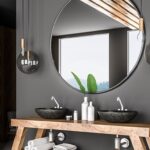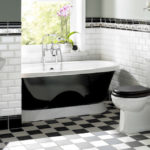Re-decorating your bathroom or kitchen can be a fun project. Maybe now you’re into something else that won’t be boring and usual. Maybe this time you feel like having a wonderful and one-of-a-kind backsplash that cannot be created with simple single large tiles. If you’re looking for mosaic style tiles that can help you refresh your walls and floors, and create an atmosphere that can match your mood and taste, perhaps it’s time to seek mosaic tile sheets.
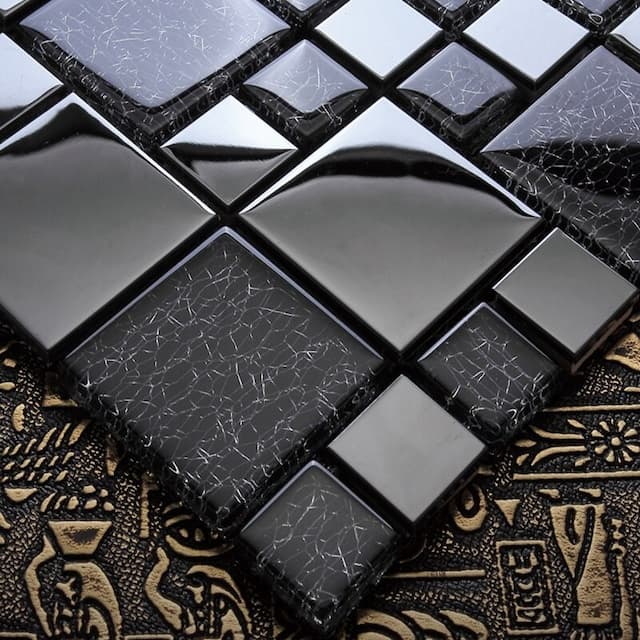 Source: Justdial
Source: Justdial
You can find various designs and shapes and can achieve the exact effect you want, whether it’s a replica of a renaissance villa or a contemporary look with natural elements like stones.
What Are Mosaic Tiles?
Mosaic tile is a product that is made of smaller ceramic tile squares that are glued onto sheets of mesh fibreglass. These tiles are placed on the sheets so the gaps between them are proper width for grout seams. This is what makes mosaic tiles quick for instalment compared to individual small tiles.
These sheets can be made of tiles in the same colour, or different colours, shapes and designs. Most mosaic sheets are made of traditional ceramic tile, but you can find mosaics made of glass, porcelain or unglazed terra cotta.
These sheets are made with small square tiles, but there are mosaics made of small rectangular or other shapes. There are narrow sheets that are used for borders or as accent pieces.
Types
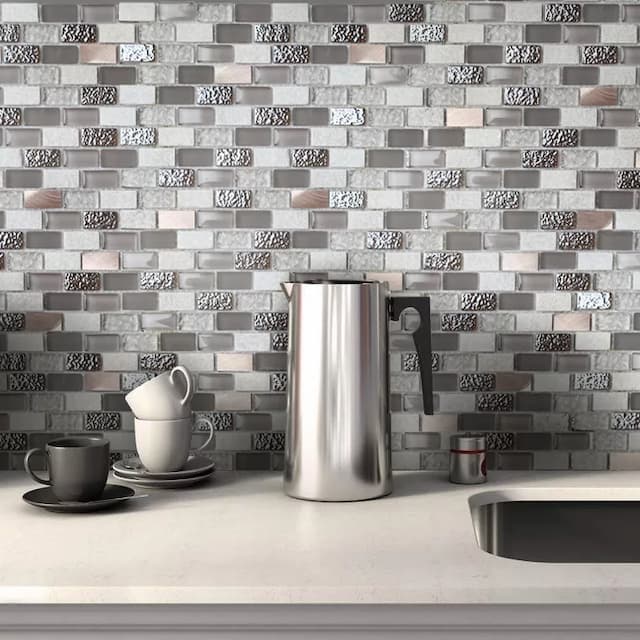 Source: B&Q
Source: B&Q
Stone Mosaic
Most people connect stone mosaic to those lovely Roman or Greek floors made of tiny stone pieces that create a large picture. Today you can have these stone mosaic tile sheets in your kitchen or bathroom or any place you want and it can be done much easier than it was done in the past. As the name says, the stone mosaic tiles are made of stone pieces laid on a sheet. These are ideal to create a lovely backsplash or to accentuate a wall art or a mirror in your bathroom.
Glass Mosaic
These come in opaque, transparent and mirror tile pieces. Lovely and unique, this type of mosaic tiles help reflect light around the room and give a glowing effect. If you choose mirrored glass mosaic, it will provide a light effect and will make your space more vivid and special.
Murals and Medallions
If you want to take a step further, you can get mosaic tiles and create an entire mural in your kitchen, living room, bathroom or hallway. Murals are a big art that goes all over the wall (it’s usually painted, but it can also be created with wallpapers or with mosaic tiles).
And while you may find actual pieces that create an entire painting, it’s best if you hire a professional to stick these tiles and create the art you want to have.
Medallions are a great way to bring a little Italian or Greek charm on your floors or walls. They look so neat and unique, that you would at times wonder if they are truly in your home or some Italian villa from the fifteenth century.
Hand Painted Stone
If you want originality you can always opt for a hand-painted stone. It will allow you to copy any design that you like, including those renaissance mosaics you have always admired. You can also create ornamental work, modern and contemporary backsplashes and anything you want.
How to Install Them
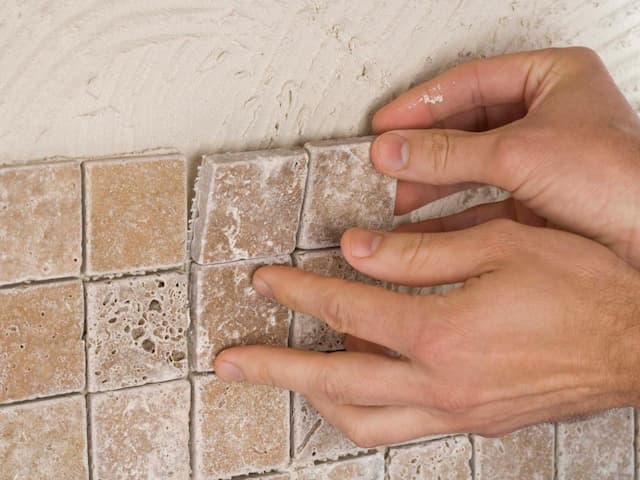 Source: HGTV
Source: HGTV
Necessary Tools
Although these aren’t too challenging even for people who haven’t done anything like this before, maybe it’s best if you allow a professional to place them on your walls or floors.
However, if you decide to do this by yourself you will need a pencil, utility knife, screw gun, framing square, tape measure, level, chalk line, clean rags, paintbrush and a rubber mallet.
Prepare the Surface
The surface must be completely flat. Usually, the underlayment is often a cement board applied on a plywood subfloor or directly against wall studs. Your mosaic tiles can be directly laid on the plywood or wallboard; cement boards offer the ideal underlayment and are often prefered by professionals.
Install the full sheets of cement board and cut pieces to fit the rest of the space. The cement board is best cut by marking it with a sharp knife.
Cut
It’s now time to cut the tile sheets to the prefered size. Cutting the fibreglass mesh will make a partial sheet in the exact size you need. However, you might have to trip the individual edge tiles so they can fit precisely.
Install the cut sheets of tile in the same way as the full sheets.
Layout
You have to play the layout to be sure that the grout seams are perfectly square-shaped. Draw crossing vertical layout lines that divide the surface top to bottom and left to right. A professional will start the installation at the centre of the surface, first installing all full sheets of tile.
Application
Start at the centre where the layout lines cross (use a rough blade to apply a layer of thin-set adhesive to one of the layout quadrants).
Apply the first tile sheet into the corner and carefully adjust it with your hands to make sure that it’s perfectly squared without the layout lines. Firmly press to set the tile in the thin-set. Hold for a few seconds, and check for any sliding when you remove your hands.
Setting
Mosaic tiles aren’t like the regular single large tiles (they can ripple or create waves on the surface). To avoid this, set the tiles with small plywood and a rubber mallet to tap down the mosaic shit surface. Check the seams between sheets to be sure there is no lippage (one row of tiles is higher than the other row).
Grout
Once the mosaic tiles are hardened into the thin-set and aren’t at risk of shifting, mix a lot of grout from dry powder. Use it for tiles with grout seams of 3mm or smaller; be sure to follow the manufacturers directions when mixing it.


